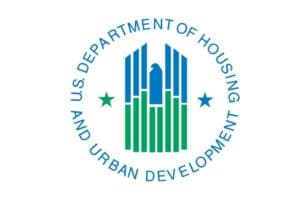HUD now expects to release the RAD revised notice (RADRev4) with modest changes to the public housing component and thorough instructions for the new RAD-for-PRAC authority in early to mid-June 2019. While waiting for RADRev4 there is plenty PHAs and their partners can do now to take advantage of recent flexibilities with RAD and other HUD preservation-redevelopment tools.
- Claim FY18-Based RAD Rents. They’re available now to projects that haven’t already closed and offer a boost ranging from $25/month/unit upwards to $100/month/unit for most (but not all) projects. That alone will make many projects now pencil out that were previously thought infeasible. The strong FY18-based rents are attributable to a meld of favorable appropriations circumstances that is not likely to hold for long. Download the 2018 RAD Rents now!
- Couple Greater NOI with Low Interest Rates. Strong RAD rents can leverage considerably more debt when combined with still-historically low interest rates—making even more previously infeasible projects feasible.
- Overcome FHA Mortgage Insurance Fears. When tapping FHA insured loans—which many PHAs have found less onerous than initially thought—even lower interest rates can often be secured with terms flexibly designed for moderate-to-sub rehab needs and even new construction. Plus, any construction and primary debt risk is absorbed by HUD. Review the FHA 223(f) and 221(d)(4) mortgage insurance options here.
- Lock In Now, Recapitalize Later. Although PHAs and their partners are often prudent in limiting the number of projects they can bite off and properly convert to RAD at one time, RAD readily accommodates converting entire or large portfolios to long-term Section 8 contracts first, which then enables PHAs to undertake more complex recapitalization transactions when needed and as capacity and resources allow. This affords better overall portfolio planning and management. Plus, RAD-induced replacement reserves and more robust operating budgets for basic no-rehab conversions help PHAs properly maintain properties until more substantial life-cycle improvements are warranted.
- Consider All of What RAD & Section 18 Can Do. HUD’s Recap Office and Special Applications Center now offer several ways that RAD and/or Section 18 Demo-Dispo options can be used to meet a range of preservation and redevelopment needs across portfolios. More moderate rehab projects are now feasible with RAD-TPV 70/30 blends. RAD and agency PBV blends can bolster mixed-income projects while adding additional affordable housing. And new Section 18 flexibilities can help reposition hard-to-manage scattered site properties, replace deeper needs properties and secure a reasonable number of TPVs for other properties requiring attention. Further explanation of these options can be found on the Collaborative’s web page under Practice > New Tools & Useful Info > Notice & Supplemental Guidance on RAD’s New Authorities & Tools.
- Assess Streamlined Voluntary Conversion for Limited Portfolios. Small agencies and early RAD adaptors with 250 units or less originally in or remaining in their conventional public housing inventories might consider tapping the new Voluntary Conversion guidelines for efficiently converting these units to the Section 8 platform. While not preservation-oriented per se, the new guidelines allow PHAs to exchange public housing subsidies for TPVs set at typical rent-reasonable voucher costs, which can be immediately project-based—or simply offered to interested tenants as mobile vouchers.

